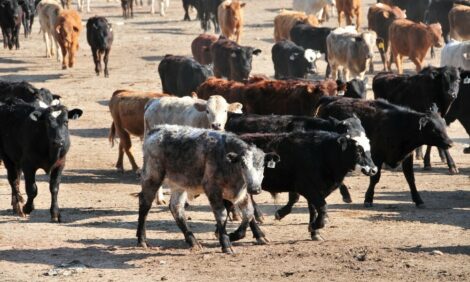



The early 2007 Northern Plains cattle market
US - The last Market Advisor column of 2006 ended with the following paragraph: “What will happen to cattle prices in 2007? Will an unexpected event occur again, especially in the fall? Both are good questions and weather probably will be an important factor in both.”Weather already has affected the 2007 cattle market. Winter storms across Colorado, Kansas, Nebraska, New Mexico, Missouri and Texas, the major cattle feeding region in the U.S., certainly have impacted the market. Fed-steer prices and live-cattle futures prices rallied several dollars per hundredweight (cwt) as packers scrambled to procure enough cattle. Not only were fewer cattle marketed, but those that were marketed came in at lower weights due to the weather stress. Cost of gains also increased with the sharply reduced feedlot performance. The impact of the storms likely will reduce beef production from what was expected throughout the first quarter of 2007. Fed-steer prices have averaged near $85 cwt for the last three years. A range in prices between $80 and $90 cwt has been evident, with only short periods of time at more than $90 or less than $80. 2007 prices for fed steers likely will follow a similar pattern, unless an unexpected event affects the market.
While the severe winter weather has been devastating to feedlots and cow-calf operations in the hard hit areas, weather in the northern Plains has tended to be warmer and drier than normal. Although there is concern about adequate moisture for this year's growing season, the moderate weather has been good for stretching the short supply of feed that resulted from last year's dry weather.
Another impact of the moisture in the central and southern Plains is that the prospect for normal spring and summer grazing conditions has improved. Last year at this time, very dry conditions existed in those areas. Lighter-weight (less than 600-pound) feeder cattle prices usually increase seasonally into spring as demand for grazing cattle increases. If the moisture pattern continues, 550-pound feeder cattle prices should increase several dollars per cwt into spring.
The volatile corn market that adversely affected the feeder cattle market in late 2006 has continued in 2007. March corn futures declined about 35 cents per bushel during the first trading days in January, but abruptly increased about 55 cents to new contract highs by mid-January, when this article was written.
The USDA-NASS monthly crop production report released Jan. 12 lowered estimated 2006 corn production another 210 million bushels to 10.535 billion bushels. Although this still will be the third largest corn crop ever, strong demand for ethanol production has sent corn prices soaring since September 2006.
Correspondingly, feeder cattle prices increased about $2 to $3 per cwt in early January because of the corn price decline, but by mid-January had fallen $4 to $5 with the rapid corn price increase.
Heavy-weight (more than 600-pound) feeder cattle prices usually decline seasonally into March as increasing numbers are marketed from backgrounding lots and wheat pastures.
Prices this year will continue to be influenced by corn prices.
What corn prices will do the rest of the year will be dependent on how many acres of corn are planted and weather conditions that will affect the size of the 2007 crop. So, one certainty is that corn prices will continue to be extremely volatile as news about prospective plantings and weather surfaces.
Feeder cattle numbers for the second half of 2007 should be near 2006 levels. The annual Jan. 1 Cattle Inventory Report that will be released by USDA-NASS on Feb. 2 will show how many beef cows are expected to calve this spring. A future Market Advisor column will analyze that report and its impact on cattle prices after the report is released.
Northern Plains cattle producers are wondering what calf prices will be by the fall marketing season. If cattle numbers and fed cattle prices are similar to last year, corn prices will continue to be the wild card. Corn prices similar to current levels should mean feeder cattle prices similar to current levels.
December corn futures prices are trading very close to nearby levels. Fall feeder cattle futures prices are several dollars higher than current levels.
Keep in mind that higher or lower corn prices by fall would affect feeder calf prices accordingly.
Cattle producers can expect even more price volatility than has been the case because of the international trade issues that have affected the industry the last several years. Implementing management and marketing practices that assure calves maximize profit potential will be important. Furthermore, developing a marketing plan with appropriate risk management strategies is encouraged.
TheCattleSite News Desk


